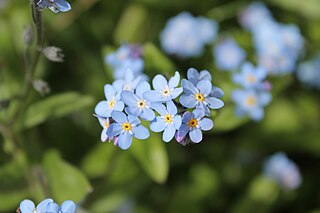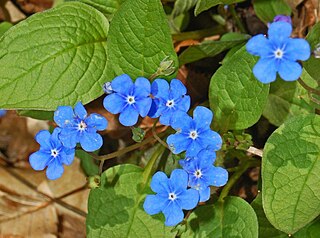
A cactus is a member of the plant family Cactaceae, a family comprising about 127 genera with some 1,750 known species of the order Caryophyllales. The word cactus derives, through Latin, from the Ancient Greek word κάκτος (káktos), a name originally used by Theophrastus for a spiny plant whose identity is now not certain. Cacti occur in a wide range of shapes and sizes. They are native to the Americas, ranging from Patagonia in the south to parts of western Canada in the north, with the exception of Rhipsalis baccifera, which is also found in Africa and Sri Lanka. Cacti are adapted to live in very dry environments, including the Atacama Desert, one of the driest places on Earth. Because of this, cacti show many adaptations to conserve water. For example, almost all cacti are succulents, meaning they have thickened, fleshy parts adapted to store water. Unlike many other succulents, the stem is the only part of most cacti where this vital process takes place. Most species of cacti have lost true leaves, retaining only spines, which are highly modified leaves. As well as defending against herbivores, spines help prevent water loss by reducing air flow close to the cactus and providing some shade. In the absence of true leaves, cacti's enlarged stems carry out photosynthesis.

A rose is either a woody perennial flowering plant of the genus Rosa, in the family Rosaceae, or the flower it bears. There are over three hundred species and tens of thousands of cultivars. They form a group of plants that can be erect shrubs, climbing, or trailing, with stems that are often armed with sharp prickles. Their flowers vary in size and shape and are usually large and showy, in colours ranging from white through yellows and reds. Most species are native to Asia, with smaller numbers native to Europe, North America, and northwestern Africa. Species, cultivars and hybrids are all widely grown for their beauty and often are fragrant. Roses have acquired cultural significance in many societies. Rose plants range in size from compact, miniature roses, to climbers that can reach seven meters in height. Different species hybridize easily, and this has been used in the development of the wide range of garden roses.

Boraginaceae, the borage or forget-me-notfamily, includes about 2,000 species of shrubs, trees, and herbs in 146 to 156 genera with a worldwide distribution.

Papaver rhoeas, with common names including common poppy, corn poppy, corn rose, field poppy, Flanders poppy, and red poppy, is an annual herbaceous species of flowering plant in the poppy family Papaveraceae. It is a temperate native with a very wide distribution area, from Africa to temperate and tropical Asia and Europe.

Amsinckia is a genus of flowering plants commonly known as fiddlenecks. The common name is derived from the flower stems, which curl over at the top in a manner reminiscent of the head of a fiddle. Fiddlenecks are in the family Boraginaceae, along with borage and forget-me-nots. The genus is named after the patrician Amsinck family in honour of the Hamburg head of state and patron of botany Wilhelm Amsinck (1752–1831).

Myosotis is a genus of flowering plants in the family Boraginaceae. The name comes from the Ancient Greek μυοσωτίς "mouse's ear", which the foliage is thought to resemble. In the Northern Hemisphere, they are colloquially known as forget-me-nots or scorpion grasses. Myosotis alpestris is the official flower of Alaska and Dalsland, Sweden. Plants of the genus are commonly confused with Chatham Islands' forget-me-nots, which belong to the related genus Myosotidium.

A flower, sometimes known as a bloom or blossom, is the reproductive structure found in flowering plants. Flowers produce gametophytes, which in flowering plants consist of a few haploid cells which produce gametes. The "male" gametophyte, which produces non-motile sperm, is enclosed within pollen grains; the "female" gametophyte is contained within the ovule. When pollen from the anther of a flower is deposited on the stigma, this is called pollination. Some flowers may self-pollinate, producing seed using pollen from the same flower or a different flower of the same plant, but others have mechanisms to prevent self-pollination and rely on cross-pollination, when pollen is transferred from the anther of one flower to the stigma of another flower on a different individual of the same species.

Myosotis laxa is a species of forget-me-not known by several common names, including tufted forget-me-not, bay forget-me-not, small-flower forget-me-not, and small-flowered forget-me-not. It has a circumboreal distribution, occurring throughout some parts of the Northern Hemisphere. It grows in many types of habitat, including moist and wet areas; it is sometimes aquatic, growing in shallow water.

Myosotis sylvatica, the wood forget-me-not or woodland forget-me-not, is a species of flowering plant in the family Boraginaceae, native to Europe. This spring-flowering plant and its cultivars, typically with blue flowers, are the familiar forget-me-nots of gardens.

Myosotis scorpioides, the true forget-me-not or water forget-me-not, is a herbaceous perennial flowering plant in the borage family, Boraginaceae.

Myosotis discolor is a species of forget-me-not known by the common name changing forget-me-not. It is native to Europe, and it can also be found throughout eastern and western North America, where it is an introduced species. It grows in many types of habitat, including disturbed areas such as roadsides.

Omphalodes verna, the creeping navelwort or blue-eyed-Mary, is a rhizomatous herbaceous perennial plant in the genus Omphalodes belonging to the family Boraginaceae.

Erysimum cheiri, syn. Cheiranthus cheiri, the wallflower, is a species of flowering plant in the family Brassicaceae (Cruciferae), native to Greece, but widespread as an introduced species elsewhere. It is also treated as a hybrid under the name Erysimum × cheiri. It is widely cultivated as a garden plant.

Lappula squarrosa is a species of flowering plant in the borage family known by several common names, including European stickseed, bur forget-me-not, bluebur, and bristly sheepbur. It is native to Europe and Asia, where it is common, and it is an introduced species in much of North America and Africa. It is well known as a noxious weed where it is naturalized and also in many parts of its native range. This is an annual herb producing an erect stem often with sprays of many long, bending branches, its form varying in different regions and climates. The plant may approach a meter in height. The stems are lined with linear to oval leaves up to 5 centimeters long and coated in whitish hairs, and the herbage emits a scent generally considered unpleasant. The inflorescence is a long, leafy raceme of tiny flowers near the ends of the branches. Each flower is 2 to 4 millimeters wide with five light blue corolla lobes. White-flowered plants are occasionally seen. The fruit is a cluster of four nutlets which are coated in hooked prickles. The seeds are dispersed when the prickles get caught on animal coats and human clothing, and when they are moved by wind.

Plagiobothrys stipitatus is a species of flowering plant in the borage family known by the common name stalked popcornflower and stipitate forget-me-not. It is native to Oregon and most of California, where it grows in vernal pools and similar wet habitat types. It is an annual herb producing a narrow, hollow, erect stem up to half a meter tall. It is coated in rough hairs. The pointed, hairy leaves along the stem are up to 11 centimeters long. The inflorescence is a series of five-lobed white flowers 2 millimeters to over one centimeter wide. The fruit is a narrow, ribbed nutlet.

Hackelia cronquistii is a species of flowering plant in the borage family known by the common name Cronquist's stickseed.
Eritrichium howardii, or Howard's alpine forget-me-not, is a rare flowering plant found in the Rocky Mountain area, most notably in Wyoming and Montana. It is a pleasant, light blue to purplish flower that has a yellow ring around the middle. It has 5 petals.
Myosotis azorica, common name Azorean mouse-ear or Azorean forget-me-not, is a plant species endemic to the Azores Islands in the North Atlantic Ocean.

Ellisia is a genus of flowering plants in the forget-me-not family (Boraginaceae), containing the sole species Ellisia nyctelea. It is native to North America, where it is also known as Aunt Lucy, false baby blue eyes, and waterpod. The genus was named in honor of British naturalist John Ellis, a contemporary of, and correspondent to, Carl Linnaeus. It was published and described by Linnaeus, in his book Species Plantarum ed.2 on page 1662 in 1763.

Myosotis secunda, also known as the creeping forget-me-not is a species of flowering plant from the family Boraginaceae.


















